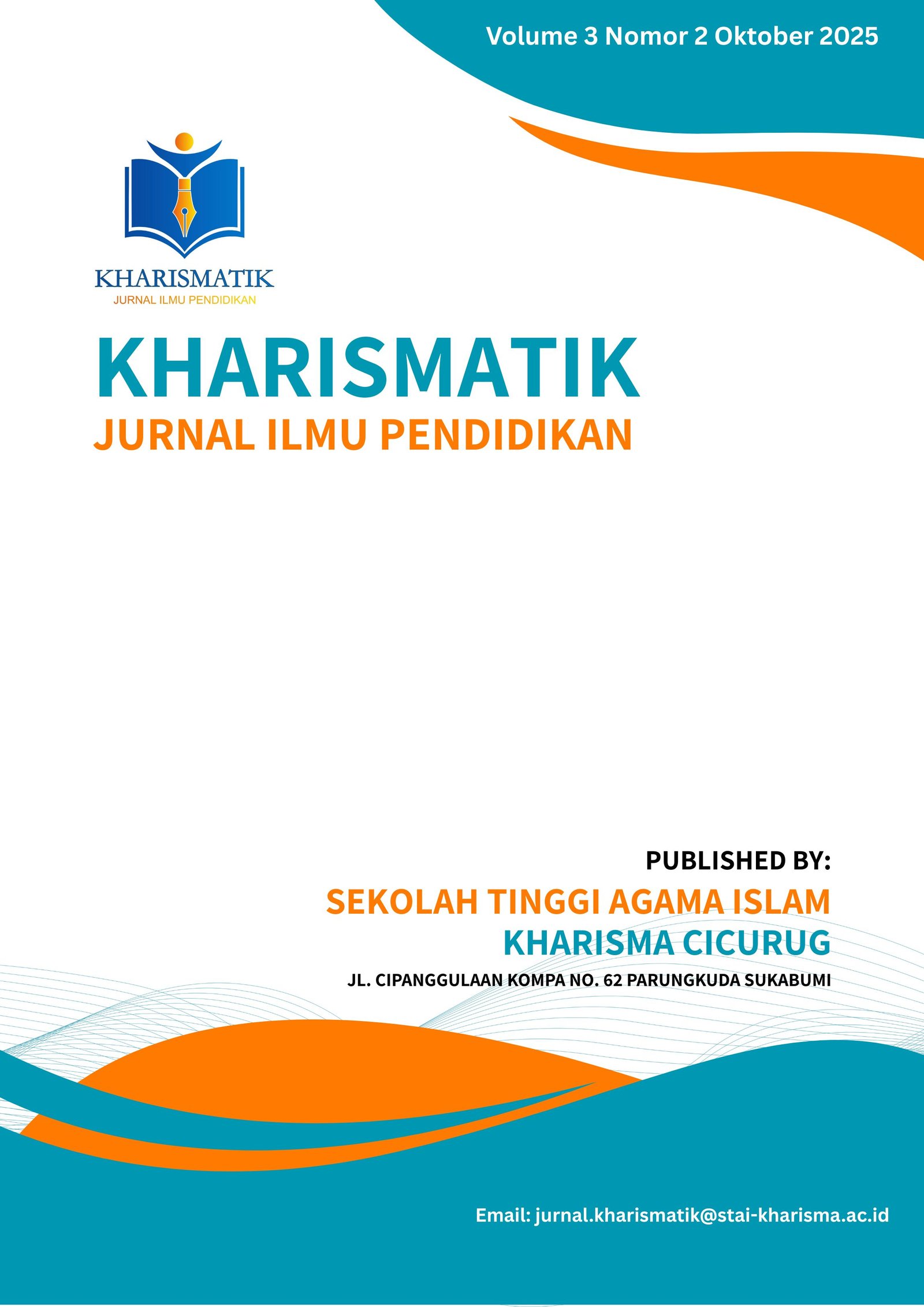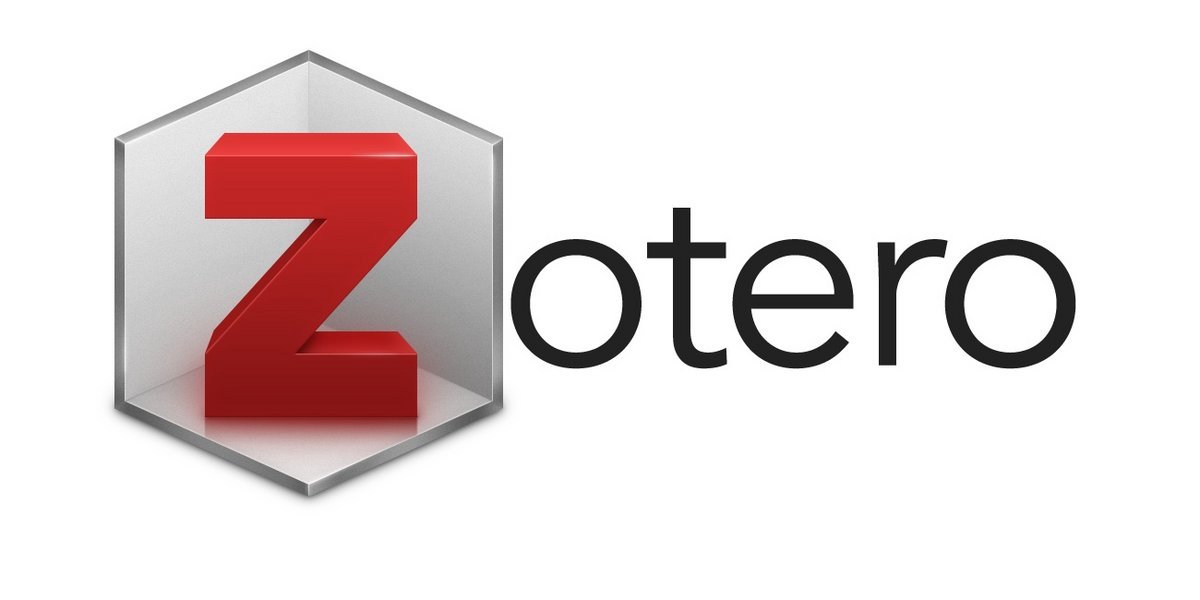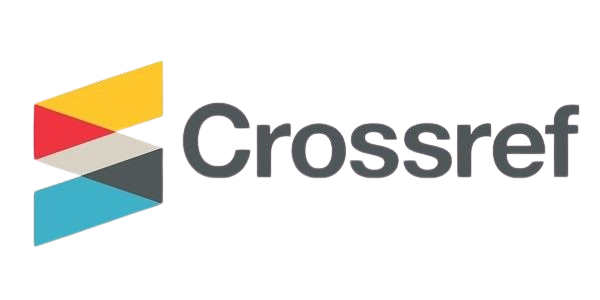Integrasi teknologi informasi dalam manajemen strategis di sekolah dasar
Integration of information technology in strategic management at elementary schools
DOI:
https://doi.org/10.70757/kharismatik.v3i2.105Keywords:
Educational management, Information technology, Elementary School, Strategic management, Student enrollmentAbstract
This research addresses the significant gap in empirical studies concerning Information Technology implementation in Indonesian elementary schools' strategic management. The study aims to analyze implementation strategies, identify supporting and hindering factors, and develop an applicable IT governance model for elementary education contexts. Employing a qualitative case study methodology, data were collected through in-depth interviews, participatory observations, and document analysis at SD Al Azhar SBP, involving teachers, administrative staff, and school principals. Findings reveal exceptional technology adoption rates with 97% positive reception of the Notion platform, 91% parent satisfaction with digital enrollment systems, and 96.3% teacher confidence in technology utilization. However, a critical discovery emerged regarding 3.7% of teachers experiencing low digital self-efficacy, indicating a capability divide that extends beyond mere technological access. The research confirms the applicability of the Technology Acceptance Model while demonstrating its limitations in addressing organizational and cultural dimensions within elementary education environments. Consequently, this study proposes the School-Technology Integration Model (S-TIM), incorporating institutional readiness, pedagogical alignment, and community engagement as essential components for sustainable technology integration. The findings emphasize that successful digital transformation in elementary education necessitates comprehensive strategies addressing both technological infrastructure and human resource development through differentiated training programs and robust organizational support mechanisms.
References
Adam, S. (2018). Pemanfaatan Teknologi Informasi Dalam Manajemen Pengetahuan Bagi Pelaku Usaha Kecil Menengah Di Kota Batam. Jursima, 6(2), 43. https://doi.org/10.47024/js.v6i2.129
Adu, E. O., & Zondo, S. S. (2023). Perceptions of Educators on ICT Integration Into the Teaching and Learning of Economics. Eureka Social and Humanities, 1, 61–71. https://doi.org/10.21303/2504-5571.2023.002530
Afrianti, S. (2019). Penerapan Sistem Informasi Manajemen Dalam Meningkatkan Kualitas Pelayanan Pendidikan Di Sekolah. https://doi.org/10.31227/osf.io/9xjhp
Agyei, D. D., & Voogt, J. M. (2011). Exploring the potential of the will, skill, tool model in Ghana: Predicting prospective and practicing teachers’ use of technology. Computers & Education, 56(1), 91–100. https://doi.org/10.1016/j.compedu.2010.08.017
Anggraeni, R., Nisfisana, N., Nurharirah, S., & Qurota’aini, F. Z. (2024). Analisis Digitalisasi Dan Pembiasaan Peserta Didik Sebagai Bentuk Pembelajaran Inovatif Di SDN Pasawahan. Karimahtauhid, 3(1), 965–980. https://doi.org/10.30997/karimahtauhid.v3i1.11060
Anita, A., & Astuti, S. I. (2022). Digitalisasi Dan Ketimpangan Pendidikan: Studi Kasus Terhadap Guru Sekolah Dasar Di Kecamatan Baraka. Jurnal Pendidikan Dan Kebudayaan, 7(1), 1–12. https://doi.org/10.24832/jpnk.v7i1.2509
Apsorn, A., Sisan, B., & Tungkunanan, P. (2019). Information and Communication Technology Leadership of School Administrators in Thailand. International Journal of Instruction, 12(2), 639–650. https://doi.org/10.29333/iji.2019.12240a
Bagozzi, R. (2007). The Legacy of the Technology Acceptance Model and a Proposal for a Paradigm Shift. Journal of the Association for Information Systems, 8(4), 244–254. https://doi.org/10.17705/1jais.00122
Creswell, J. W., & Poth, C. N. (2017). Qualitative Inquiry and Research Design: Choosing Among Five Approaches. SAGE Publications. https://books.google.co.id/books?id=gX1ZDwAAQBAJ
Davis, F. D. (1989). Perceived Usefulness, Perceived Ease of Use, and User Acceptance of Information Technology. MIS Quarterly, 13(3), 319. https://doi.org/10.2307/249008
Delone, W., & McLean, E. (2003). The DeLone and McLean Model of Information Systems Success: A Ten-Year Update. Journal of Management Information Systems, 19(4), 9–30. https://doi.org/10.1080/07421222.2003.11045748
Farjon, D., Smits, A., & Voogt, J. (2019). Technology integration of pre-service teachers explained by attitudes, competency, access, and experience. Computers & Education, 130, 81–93. https://doi.org/10.1016/j.compedu.2018.11.010
Gómez, F. C., Trespalacios, J., Hsu, Y.-C., & Yang, D.-C. (2022). Exploring teachers’ technology-integration self-efficacy. TechTrends, 66(2), 159–171. https://doi.org/10.1007/s11528-021-00639-z
Howard, S. K., Swist, T., & Jackson, M. (2022). Educational data journeys: Critical perspectives on data use in schools. Computers & Education: Artificial Intelligence, 3, 100073. https://doi.org/10.1016/j.caeai.2022.100073
Jauhari, I. (2021). Sistem Informasi Manajemen Pendidikan Islam. Tarbawi Ngabar Jurnal of Education, 2(2), 190–208. https://doi.org/10.55380/tarbawi.v2i2.130
Kvale, S., & Brinkmann, S. (2009). InterViews: Learning the Craft of Qualitative Research Interviewing. SAGE Publications. https://books.google.co.id/books?id=bZGvwsP1BRwC
Lincoln, Y. S., Guba, E. G., & Pilotta, J. J. (1985). Naturalistic inquiry. International Journal of Intercultural Relations, 9(4), 438–439. https://doi.org/10.1016/0147-1767(85)90062-8
Mayasari, A., Supriani, Y., & Arifudin, O. (2021). Implementasi Sistem Informasi Manajemen Akademik Berbasis Teknologi Informasi Dalam Meningkatkan Mutu Pelayanan Pembelajaran Di SMK. Jiip - Jurnal Ilmiah Ilmu Pendidikan, 4(5), 340–345. https://doi.org/10.54371/jiip.v4i5.277
Merriam, S. B., & Tisdell, E. J. (2015). Qualitative Research: A Guide to Design and Implementation. Wiley. https://books.google.co.id/books?id=JFN_BwAAQBAJ
Michos, K., Dindar, M., Røkenes, F. M., & Krumsvik, R. J. (2023). Teachers’ data literacy as a predictor of digital data use. Education and Information Technologies. https://doi.org/10.1007/s10639-023-11772-y
Miles, M. B., Huberman, A. M., & Saldana, J. (2013). Qualitative Data Analysis: A Methods Sourcebook. SAGE Publications. https://books.google.co.id/books?id=p0wXBAAAQBAJ
Nurlita, D., Driana, E., & Nuraini, S. (2024). Persepsi pemangku kepentingan pada PPDB daring DKI Jakarta. Jurnal Pendidikan Progresif, 14(1), 105–119. https://doi.org/10.23960/jpp.v14.i1.202408
Paetsch, J., Franz, S., & Wolter, I. (2023). Early-career teachers’ experience and technology self-efficacy. Computers in Human Behavior, 143, 107586. https://doi.org/10.1016/j.chb.2023.107586
Patton, M. Q. (2002). Qualitative Research & Evaluation Methods. SAGE Publications. https://books.google.co.id/books?id=FjBw2oi8El4C
Pranaditya, W. D., Suryaningsi, S., Jamil, J., Marwiyah, M., Pardosi, J., & Wingkolatin, W. (2024). Implementasi Digitalisasi Pendidikan Kewarganegaraan Pasca Pembelajaran Online Di SMA Negeri 1 Tenggarong. Primer Jurnal Ilmiah Multidisiplin, 2(1), 84–93. https://doi.org/10.55681/primer.v2i1.315
Sánchez-Prieto, J. C., Hernández-García, Á., García-Peñalvo, F. J., Chaparro-Peláez, J., & Olmos-Migueláñez, S. (2019). Break the walls! Second-Order barriers and the acceptance of mLearning by first-year pre-service teachers. Computers in Human Behavior, 95, 158–167. https://doi.org/10.1016/j.chb.2019.01.019
Sarjito, A. (2023). Dampak Digitalisasi Administrasi Perdesaan Di Negara Berkembang. Jurnal Ilmiah Ilmu Administrasi, 13(2), 106–124. https://doi.org/10.33592/jiia.v13i2.3814
Satar, M. S., Kaur, A., & Ghani, N. (2024). Digital learning orientation and competencies. Sustainability, 16(17), 7794. https://doi.org/10.3390/su16177794
Scherer, R., Siddiq, F., & Tondeur, J. (2019). The technology acceptance model (TAM): A meta-analytic structural equation modeling approach to explaining teachers’ adoption of digital technology in education. Computers & Education, 128, 13–35. https://doi.org/10.1016/j.compedu.2018.09.009
Suparmin, S., Ja’far, H. B., & Haris, R. M. (2023). Akselerasi Digitalisasi Sebagai Upaya Pengembangan Sistem Pendidikan Pada Prodi Fakultas Syari’ah Dan Hukum UIN Sumatera Utara. Edukatif Jurnal Ilmu Pendidikan, 5(6), 2519–2526. https://doi.org/10.31004/edukatif.v5i6.5914
Suriono, Z. (2022). Analisis SWOT Dalam Identifikasi Mutu Pendidikan. Alacrity Journal of Education, 94–103. https://doi.org/10.52121/alacrity.v1i3.50
Venkatesh, V., Morris, M. G., Davis, G. B., & Davis, F. D. (2003). User Acceptance of Information Technology: Toward a Unified View. Institutions & Transition Economics: Microeconomic Issues eJournal. https://api.semanticscholar.org/CorpusID:14435677
Widianto, E. (2021). Pemanfaatan Media Pembelajaran Berbasis Teknologi Informasi. Journal of Education and Teaching, 2(2), 213. https://doi.org/10.24014/jete.v2i2.11707
Wijaya, W. M., & Risdiansyah, D. (2020). Dampak Implementasi Sistem Informasi Manajemen Pendidikan Pada Kegiatan Akademik Di Sekolah. Jurnal Penelitian Pendidikan, 20(1), 129–135. https://doi.org/10.17509/jpp.v20i1.24564
Yin, R. K. (2017). Case Study Research and Applications: Design and Methods. SAGE Publications. https://books.google.co.id/books?id=uX1ZDwAAQBAJ
Zam, E. M. (2021). Peran Literasi Teknologi Informasi Dan Komunikasi Pada Pembelajaran Jarak Jauh Di Masa Pandemi Covid-19. Edutech Jurnal Inovasi Pendidikan Berbantuan Teknologi, 1(1), 11–20. https://doi.org/10.51878/edutech.v1i1.176
Zeng, Y., Wang, Y., & Li, S. (2022). ICT integration self-efficacy and TPACK: A meta-analysis. Frontiers in Psychology, 13, 1091017. https://doi.org/10.3389/fpsyg.2022.1091017
Downloads
Published
How to Cite
Issue
Section
Citation Check
License

This work is licensed under a Creative Commons Attribution-ShareAlike 4.0 International License.
Authors who publish articles in Kharismatik agree to the following terms:
- Authors retain copyright of the article and grant the journal right of first publication with the work simultaneously licensed under a CC-BY-SA or The Creative Commons Attribution–ShareAlike 4.0.
- Authors are able to enter into separate, additional contractual arrangements for the non-exclusive distribution of the journal's published version of the work (e.g., post it to an institutional repository or publish it in a book), with an acknowledgment of its initial publication in this journal.
- Authors are permitted and encouraged to post their work online (e.g., in institutional repositories or on their website) prior to and during the submission process, as it can lead to productive exchanges, as well as earlier and greater citation of published work (See The Effect of Open Access).













